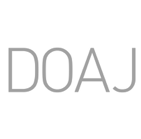Journal of Dental Sciences Q1 Unclaimed
Journal of Dental Sciences is a journal indexed in SJR in Dentistry (miscellaneous) with an H index of 36. It is an CC BY-NC-ND Journal with a Double blind peer review review system, and It has a price of 360 €. The scope of the journal is focused on ultrasonography, stroke, mortality, risk, neoplasms. It has an SJR impact factor of 0,854 and it has a best quartile of Q1. It is published in English. It has an SJR impact factor of 0,854.
Type: Journal
Type of Copyright: CC BY-NC-ND
Languages: English
Open Access Policy: Open Access
Type of publications:
Publication frecuency: -



360 €
Inmediate OANPD
Embargoed OA- €
Non OAMetrics
0,854
SJR Impact factor36
H Index446
Total Docs (Last Year)826
Total Docs (3 years)11143
Total Refs2367
Total Cites (3 years)595
Citable Docs (3 years)2.52
Cites/Doc (2 years)24.98
Ref/DocOther journals with similar parameters
International journal of oral science Q1
International Endodontic Journal Q1
Journal of Dental Research Q1
Japanese Dental Science Review Q1
Journal of Dentistry Q1
Compare this journals
Aims and Scope
Best articles by citations
Solitary fibrous tumor of the buccal mucosa
View moreModeling viscoelastic behavior of periodontal ligament with nonlinear finite element analysis
View moreRoot canal morphology analysis of maxillary permanent first and second molars in a southeastern Turkish population using cone-beam computed tomography
View moreOropharyngeal sialolipoma
View moreDental implant-retained mandibular overdenture therapy: A clinical study of patients' response
View moreEffects of periodontal bone loss on the natural frequency of the human canine: a three-dimensional finite element analysis
View moreEffects of functional training after orthognathic surgery on masticatory function in patients with mandibular prognathism
View moreA site-specific intraoperative measurement of bone-to-implant contact during implant insertion: A study on bovine ribs using a computerized implant motor
View moreComparison of long-term outcomes between ferric sulfate pulpotomy and indirect pulp therapy in primary molars
View moreInvestigating the maxillary buccal vestibule
View moreComparison of the oral health and self-rated general health status of undergraduate students in Taiwan and Japan
View moreDegree of conversion of three fissure sealants cured by different light curing units using micro-Raman spectroscopy
View moreDaily life habits associated with eveningness lead to a higher prevalence of dental caries in children
View moreMorphological and proteomic analyses of the biofilms generated by Streptococcus mutans isolated from caries-active and caries-free adults
View moreConcomitant upregulation of matrix metalloproteinase-2 in lesions and circulating plasma of oral lichen planus
View moreChanges in biomarkers of hepatic and renal function after prolonged general anesthesia for oral cancer surgery: A cohort comparison between desflurane and sevoflurane
View moreAn analysis of oral radiographic findings and their interpretations in women with eating disorders
View moreCytologic effects of primary tooth endodontic filling materials
View moreFracture load of provisional fixed partial dentures with long-span fiber-reinforced acrylic resin and thermocycling
View moreCorrelation between salivary mutans streptococci, lactobacilli and the severity of early childhood caries
View moreRelationship between oral status and maximum bite force in preschool children
View moreA novel cutting machine supports dental students to study the histology of the tooth hard tissue
View moreConversion of palatal rugae pattern to scanable Quick Response code in an Arabian population
View moreThe effectiveness of a caries preventive program in mothers and infants -An 18- month follow-up study
View more
Comments